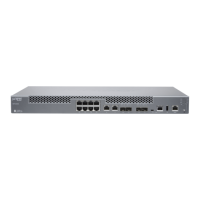Description Create an instance of a virtual network function (VNF) on platforms that run disaggregated
Junos OS software.
NOTE:
• Creating a VNF instance fails if the resources required by the VNF are not
available in the system.
• If you use init-descriptor to define a VNF by specifying and setting different
values for the virtual CPU count or memory and later if you delete the virtual
cpu count, the system restores the value to a default value of 1 for vCPU
and 1GB for memory.
• You can enable the VNF options such virtual-cpu-hardware-virtualization
(vmx), hugepages, image-type, and image-bus-type only when you define
the VNF initially. You cannot enable or disable the VNF options after
committing the VNF configuration. To enable or disable the VNF options,
you must delete the VNF configuration and re-configure with the VNF
options.
Options virtual-network-functions vnf-name—Name of the VNF instance. It is mandatory to
provide one of the options: init-descriptor or image.
file-path—Path of the source file.
number | range—Number or a range of physical CPUs. For example, 2 or 2...5.
interface-name—Name of the VNF interface.
physical-interface-name—Name of the physical interface to which the VNF interface is
attached.
vlan-id—SR-IOV virtual function to use to attach a VNF to a physical interface.
native-vlan-id—Virtual LAN identifier for untagged frames. For example, 1...4095
vlan-name—Name of the VLAN members.
size—Amount of memory allocated to a VNF in kilobytes. The default size is 1 GB.
device-name—Name of the storage device.
file-name—Name of the source file of the storage device.
Required Privilege
Level
routing—To view this statement in the configuration.
routing-control—To add this statement to the configuration.
141Copyright © 2017, Juniper Networks, Inc.
Chapter 6: Virtual Network Functions Configuration Statements and Operational Commands

